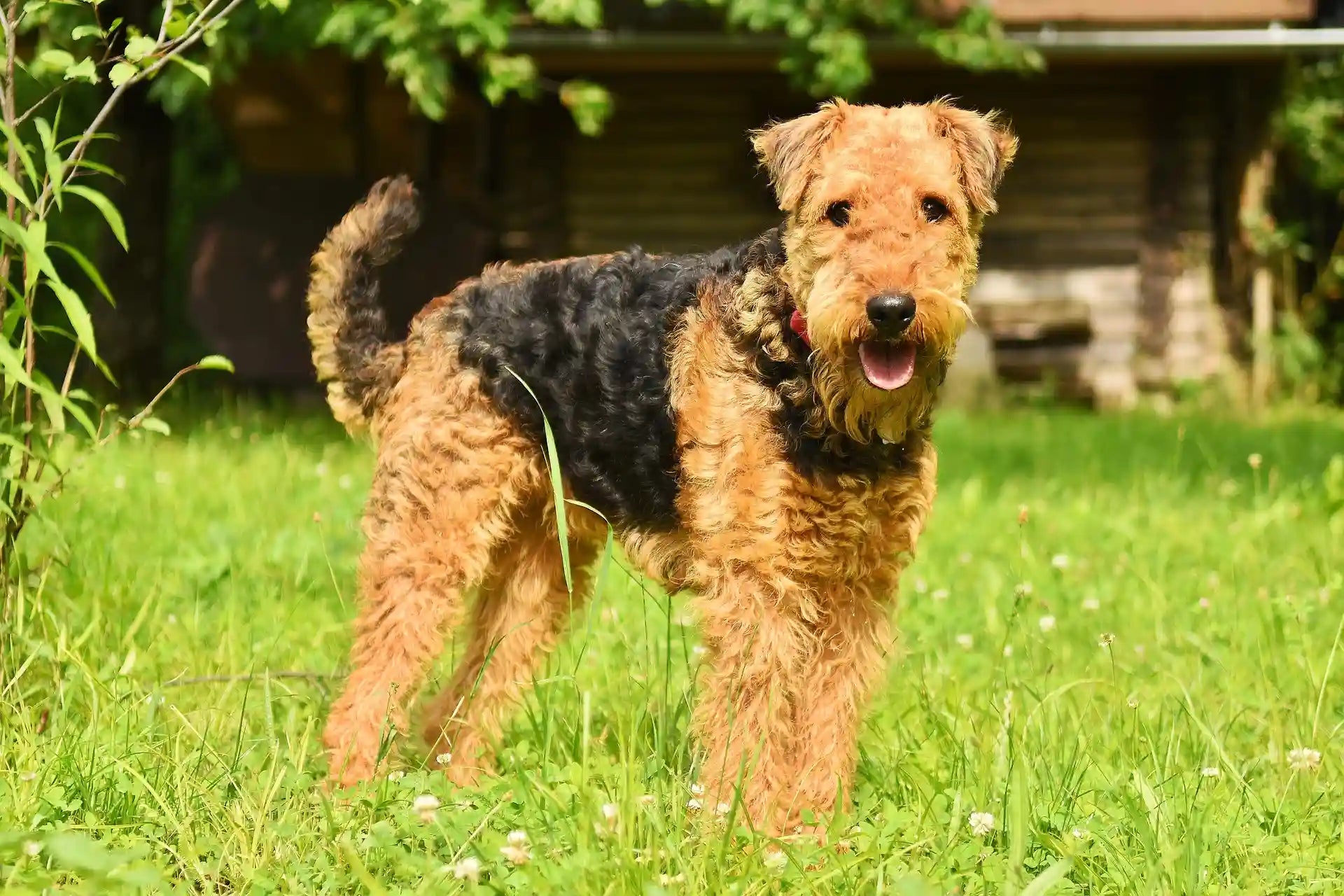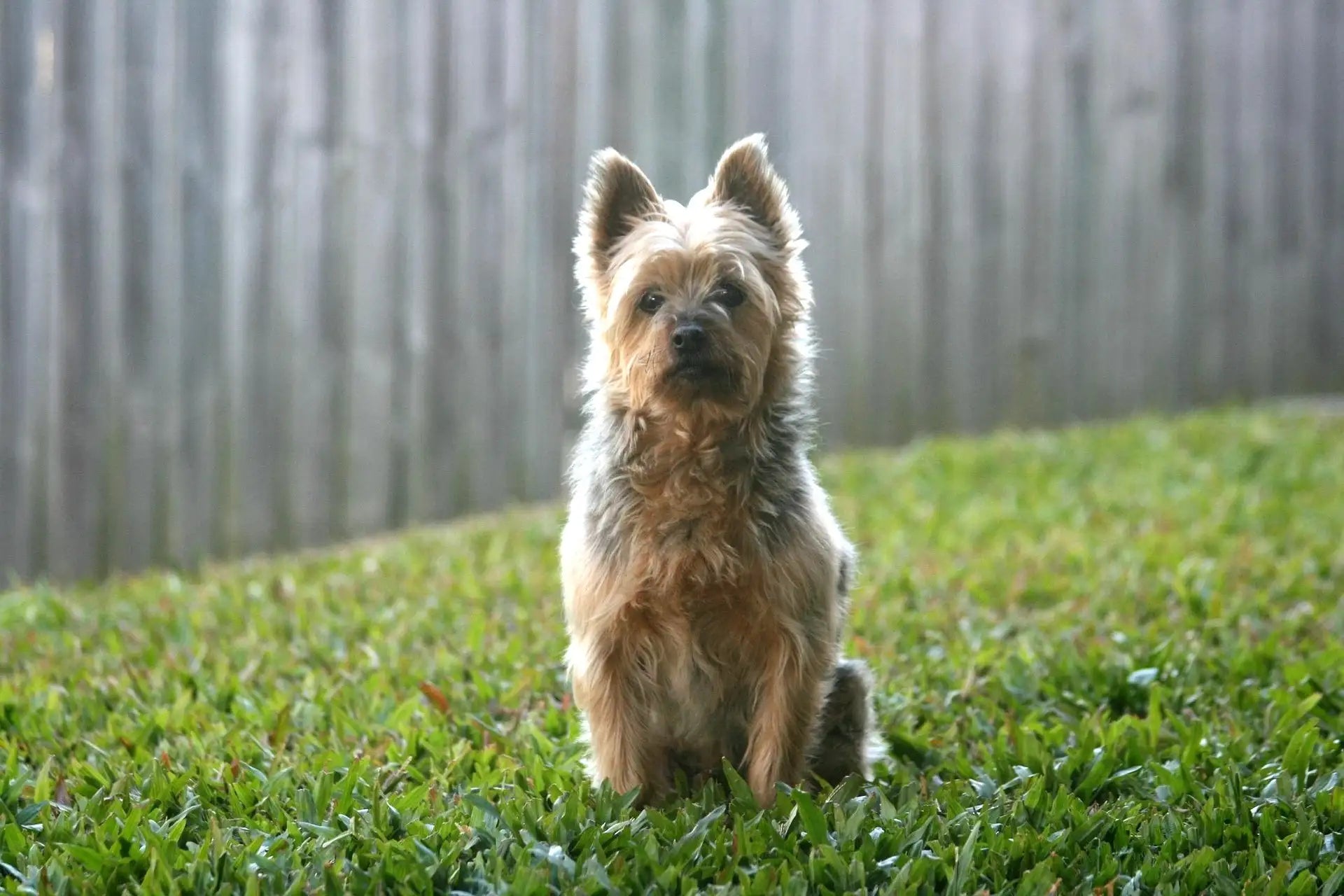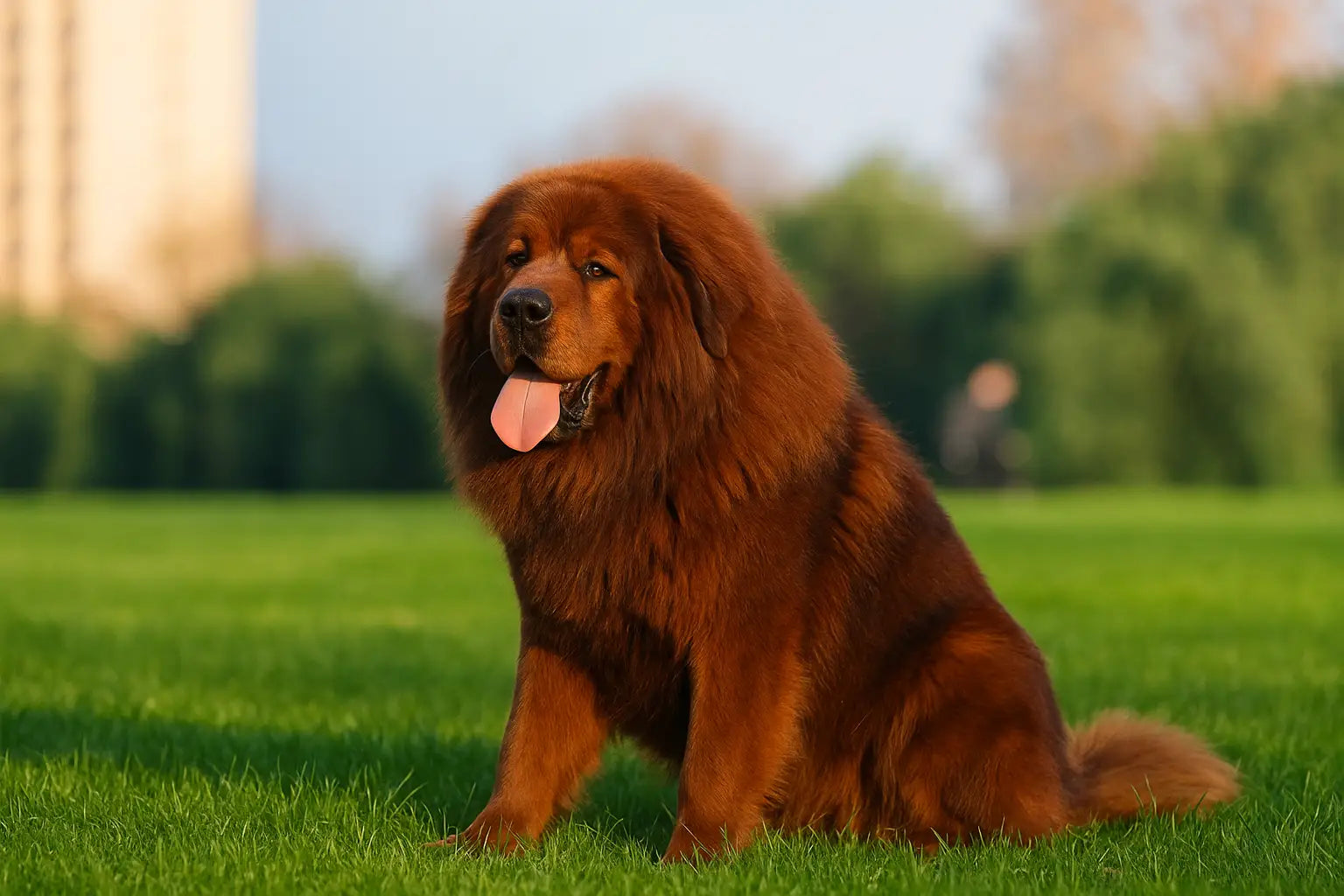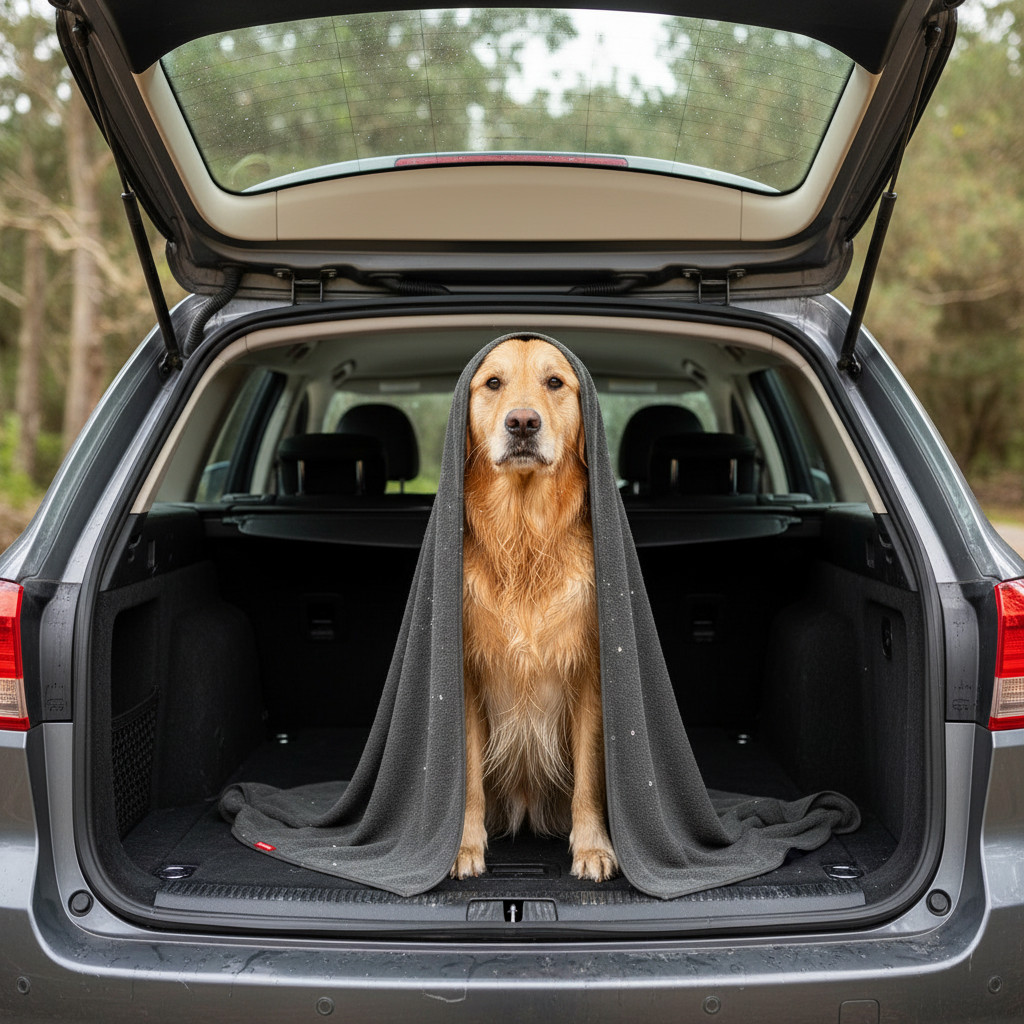
Airedale Terrier Dog Breed: Trusted Guide to Care, Training & Health
Known as the "King of Terriers," the Airedale Terrier is a confident, intelligent, and lively breed with a loyal nature. Originally bred in England for hunting and working roles, Airedales today are popular family companions and versatile working dogs.
In this guide, we answer the most common and important questions about Airedale Terriers to help you decide if this energetic breed is the right fit for your home.
Quick Facts Overview
|
Trait |
Details |
|
Size Category |
Medium to Large |
|
Height & Weight |
Height: 56–61 cm; Weight: 18–29 kg |
|
Coat Type & Colours |
Dense, wiry, and harsh double coat; tan with black or grizzle saddle |
|
Energy Level |
High |
|
Origin |
England |
|
Grooming Needs |
Moderate |
|
Temperament |
Confident, intelligent, friendly, courageous |
|
Trainability |
High |
|
Compatibility |
Great with active families and experienced dog owners |
|
Lifespan |
10–13 years |
Breed Origins and History
The Airedale Terrier originated in the Aire Valley of Yorkshire, England, in the mid-19th century. Bred from working terriers and Otterhounds, Airedales were designed to hunt otters and rats along the riverbanks. Their intelligence, versatility, and courage also saw them serve as police dogs, wartime messengers, and hunting companions. Today, the Airedale remains a favourite for those seeking a loyal, capable, and spirited companion.
Personality and Temperament
Airedales are lively, independent, and confident dogs with a strong desire to be part of family life. They are affectionate with their families but maintain a certain terrier stubbornness. Always alert, they make excellent watchdogs without being overly aggressive. Their playful nature endears them to children, though early training and supervision are important for harmony.
Trainability and Intelligence
Airedales are highly intelligent and love mental challenges. Their independence means they require consistent, positive training methods.
-
Start obedience training early and keep sessions engaging
-
Use positive reinforcement with treats, toys, and praise
-
Excel in activities like obedience, agility, and tracking
-
A comfortable training harness helps during active training
-
Carry treats easily during sessions with a treat bag
Exercise and Activity Requirements
Airedales have plenty of energy and need daily exercise to keep their bodies and minds healthy.
-
60–90 minutes of exercise daily
-
Enjoy long walks, play sessions, and problem-solving games
-
Mental stimulation is critical to avoid boredom
-
A hands-free lead is ideal for jogs and active walks
-
They thrive with challenging activities like scent work and agility training
Physical Characteristics
The Airedale is an athletic, square-built dog with a proud, upright stance.
-
Height: 56–61 cm
-
Weight: 18–29 kg
-
Coat: Dense, wiry outer coat with a softer undercoat
-
Colour: Tan with black or grizzle saddle
-
Best fitted with small to medium dog gear
Living Environment Suitability
Airedales adapt well to various living environments but thrive best with active owners.
-
Suitable for houses with secure yards
-
Apartment living possible with very high exercise commitment
-
Prefer being included in family activities rather than left alone
-
Rest comfortably on an orthopaedic dog bed
-
Always secure them in the car with a dog car harness
Grooming and Maintenance
The Airedale’s wiry coat needs regular maintenance to stay in top condition.
-
Brush 2–3 times per week
-
Hand-stripping or professional grooming recommended every few months
-
Bathe only when necessary to avoid stripping natural oils
-
Clean ears and trim nails regularly
-
A lightweight soft collar helps avoid coat damage
Common Health Issues
Airedales are generally healthy but can be prone to a few breed-specific issues.
-
Common issues: hip dysplasia, hypothyroidism, allergies
-
Regular vet check-ups and a healthy diet are important
-
Joint support with a quality dog bed helps as they age
Diet and Feeding Guidelines
Airedales need a balanced, nutrient-rich diet to support their active lifestyle.
-
Puppies: Feed 3–4 small meals daily
-
Adults: Feed twice daily
-
Choose formulas that support joint health and overall vitality
-
Fresh water should always be available
-
Portable bowls are useful for outings and travel
Compatibility with People and Other Pets
Airedales are outgoing and thrive in active, loving homes.
-
Great with children when socialised early
-
Can live with other dogs, but supervision is needed with small pets
-
Early training prevents dominance issues
-
Manage multi-dog outings with a coupler lead
Behavioural Issues and Management
Without proper stimulation, Airedales can become bored and stubborn.
-
Need daily mental and physical challenges
-
Can develop digging or barking habits if left under-stimulated
-
Engage them with puzzle toys, scent games, or structured play
-
Use a no-pull harness to encourage polite walking manners
-
Provide durable toys to prevent destructive behaviour
Essential Gear for Airedale Terriers
Walking and Training
Comfort and Rest
Fun and Enrichment
FAQs: Airedale Terrier
1. Is the Airedale Terrier a good family dog?
Yes, Airedale Terriers make excellent family companions. They are loyal, playful, and protective of their loved ones. They generally do well with children, especially if they are raised together, but their boisterous nature means supervision around very small children is recommended.
2. Are Airedale Terriers easy to train?
Airedales are very intelligent and capable learners, but they can also be independent thinkers. They respond well to positive reinforcement and consistent training. Starting early and keeping sessions engaging will help bring out their best.
If you are looking for training support, you can find training leads and harnesses suited for energetic breeds to make sessions smoother.
3. Are Airedale Terriers high maintenance?
In terms of grooming and energy, they are moderately high maintenance. Their wiry coat needs regular brushing and occasional professional grooming. They also need daily exercise and mental stimulation to prevent boredom and unwanted behaviours.
4. Can an Airedale Terrier be left alone?
Airedales can manage being alone for short periods, but they are social dogs that thrive on interaction. Leaving them alone too often can lead to boredom and destructive behaviours. Providing enrichment toys or arranging company during long absences is a good idea.
5. Do Airedales bark a lot?
Airedales are naturally alert and can be vocal if they sense something unusual. While they are not excessive barkers without cause, they will bark to alert their owners to visitors or unfamiliar sounds.
6. Do Airedales shed a lot?
Airedale Terriers are light shedders compared to many other breeds. Their wiry coat holds onto dead hair, which means they shed minimally, especially with regular grooming. However, during seasonal changes, you may notice slightly more shedding.
7. Are Airedales intelligent?
Yes, Airedale Terriers are highly intelligent. They are quick learners and enjoy activities that challenge them mentally. Their smart and adaptable nature is one of the reasons they have historically been used for police, military, and search-and-rescue work.
8. What are the disadvantages of Airedale Terriers?
Their energy levels, independence, and need for regular grooming can be challenging for some owners. Without consistent training and daily exercise, they can become stubborn, bored, or destructive. They are better suited to experienced or active dog owners.
9. How much exercise does an Airedale need?
Airedales require at least one to two hours of exercise each day. They enjoy long walks, playtime in the yard, and activities that engage both their body and mind. You can explore durable dog harnesses for active dogs to make daily exercise safer and more enjoyable for both you and your dog.
10. Are Airedales good with other dogs?
Airedale Terriers can get along well with other dogs, particularly if they are socialised early. However, they can sometimes show dominance, especially with other strong-willed dogs. Careful introductions and proper training help ensure good relationships with other pets.
Final Thoughts
Airedale Terriers are smart, active, and affectionate dogs that thrive in homes where their energy and intelligence are appreciated. While they do require regular grooming, training, and daily exercise, they reward their owners with loyalty, playfulness, and a strong protective instinct.
Understanding their needs and unique temperament will help you build a happy, lasting relationship with this remarkable breed.
Looking for the best gear for your lively Airedale Terrier? Equip yourself with the right dog training gear, grooming essentials, and durable walking harnesses to give your Airedale the best start.
Visit our EzyDog store to find everything your energetic companion needs for a happy and active life.





Leave a comment
This site is protected by hCaptcha and the hCaptcha Privacy Policy and Terms of Service apply.